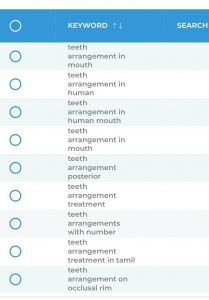SEO or “Search Engine Optimization” is a digital marketing strategy that targets a website’s presence in search results on search engines. Intelligent use of SEO in your writing can increase your visibility in search results. In this article, you will learn what SEO is, and how to effectively use it in your writing.
WHAT IS SEO?
SEO is a system used to acquire traffic by making a website visible in search engine results through organic or paid techniques. Organic means using unpaid techniques to increase a website’s presence; relevant keywords, quality, and optimal multimedia content are a few ways to implement SEO on your webpage.
To grasp a better understanding of SEO, two essential things come into play
- Appropriate traffic: Not all traffic is “good” traffic. A website can appeal to the wrong audience – if Google states that your website is a resource for ‘Apple products’ when really you are ‘selling apples’, that is not quality traffic. Instead, a website should attract visitors who are genuinely interested in what you have.
- Quantity of traffic: Once you know the right traffic, you need to generate and increase SEO traffic. Once a website has the right people clicking through from those search results, more engagement is achievable.
SEO is an invaluable part of the World Wide Web. It helps users find almost anything on the internet. It is fascinating how search engines have modified their response to search queries, to churn out only the most relevant information to searchers. Let’s check out how that works.
HOW SEO WORKS
When you type in your query/search on Google, Bing, or whatever search engine you use, there are three things a search engine does: Crawling, Indexing and Ranking.
CRAWLING
When you punch the ‘search’ button, a squad of robots scours recent content from web pages related to your query. Robots crawl all over the World Wide Web, gather web pages, trace the links on those webpages to find new URLs. The contents found are added to the index.
INDEX
Search engine information is processed and stored in something called an index. An index is an enormous database of all the content discovered and presumed relevant enough to serve up to searchers.
RANKING
Google sifts its index for the most relevant information and orders (rank, arrange) that content in the hopes of solving the searcher’s query. Ranking is the ordering of search results by relevance.
HOW TO USE SEO IN YOUR WRITING
SEO writing is vital if you are resolute on earning rankings on search results. Search engines thrive in fresh, quality content, without which there will be nothing to rank.
- Your content must target your valuable keywords: Writing begins with research. And that’s true of SEO writing. In this case, it’s keyword research. You start by entering a keyword related to your content. For example, a dentist might enter a phrase like “teeth arrangement”.
As seen above, the phrase has given us a low-down of topic ideas for teeth arrangement. Inspiration for SEO content and blog posts can be drawn from keyword research. Keyword research and valuable SEO writing topics go in tandem. Your page headings, meta descriptions, page titles, and site content are key places you must include target keywords when creating SEO content.
Write simple and readable SEO content:
Ensure you write engaging and interesting content readers can easily understand and assimilate. Create valuable content that solves real problems.
To keep readers engaged and avoid overwhelm, break SEO content into segments that allow readers to skim your content and pick up on pertinent points. Use headings that include keywords.
Quality over quantity:
To earn top rankings with your SEO writing, focus on quality. Google ranks content that provides value to readers above all else. Search engines factor in quality information that provides immediate solutions to a searcher’s query.
When it comes to writing for SEO, aim for 750 – 2000 words, depending on the topic. Lengthy content is good, but quality content is superb. Understand that range is a guide. Some blog posts work better using a longer format, some don’t, but the most essential aspect of writing is the quality value it provides.
Include external links to other helpful content:
Search engines use search bots (crawlers) to discover new content. Linking your SEO content to other related relevant content makes it easier for search engines to index your content – which enhances your ranking.
Visitors engage your site more when you add links that depict their search intent. You may not have all the information but your links help the searcher locate helpful content that answers their question and also learn more about your content.
Additionally, you should not shy away from implementing internal links on your content. It helps visitors navigate your site seamlessly, and internal links also help your web pages become more visible in search. It is crucial to a website’s navigation and structure, allowing visitors, readers, and crawlers (search bots) to navigate and discover your website’s content.
Adedayo Ajao


